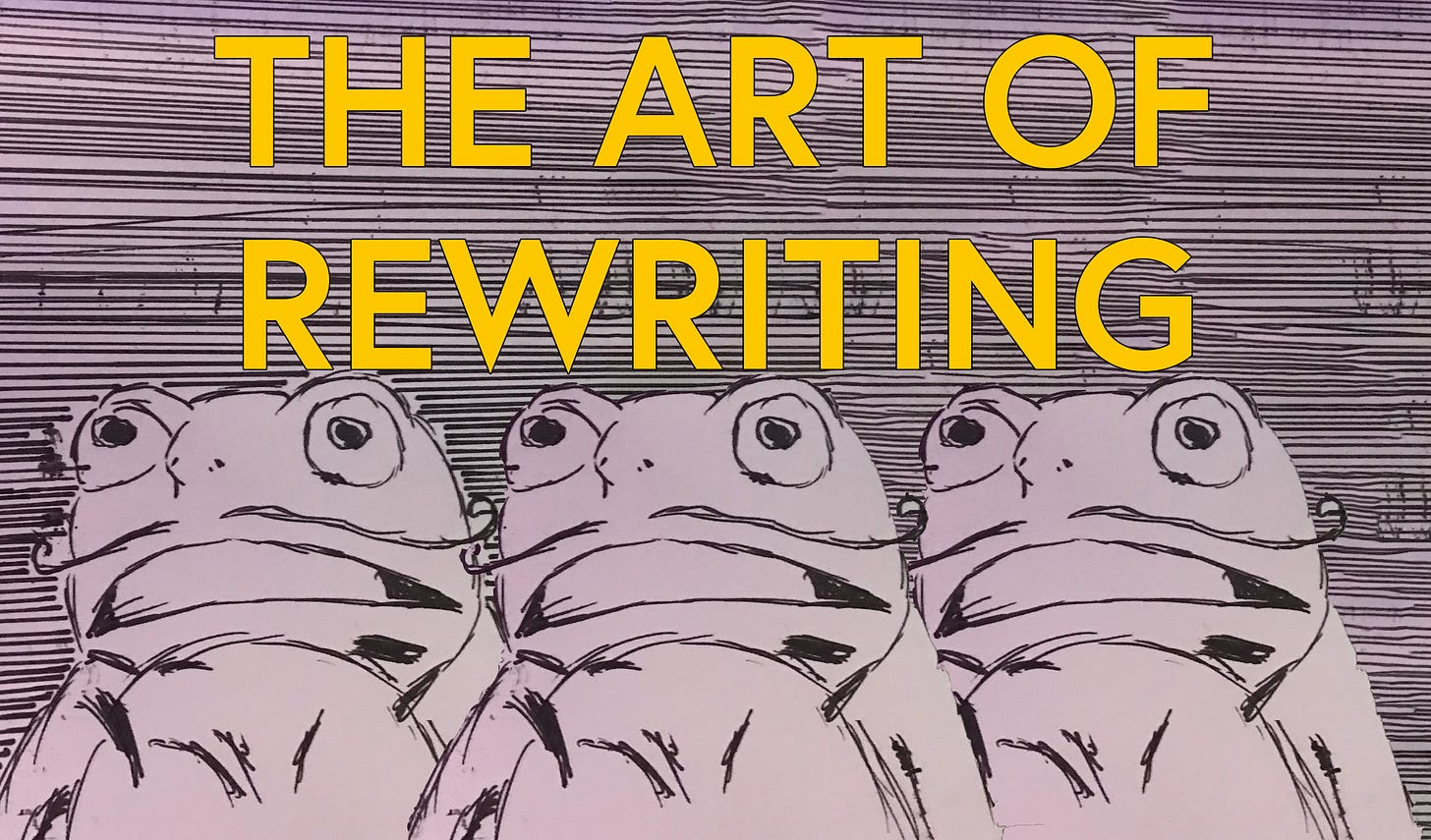
This Tool Kit breaks down and adds new insight to the lessons from Newsletter #1: Dealing with a Blank Page. Check out the letter for the original context.
Three tools to use when dealing with a blank page:
Find the statue in the stone.
The sculptor Michelangelo has a quote: “Every block of stone has a statue inside it, and it is the task of the sculptor to discover it.” This is true in writing as well. A blank page, however, is not a block of stone. And you can’t chisel away at something that doesn’t yet exist. Remove filters from your early process and write down every stray thought onto the page. Lyrics stuck in your head, jokes, digressions — everything even vaguely connected to the general idea of the story — write them down without reservation. Set a ten-minute timer and follow whatever thought thread passes your mind as though it were a shooting star. Write every thought you have as you trail behind it. These thoughts are the block of stone that you will eventually whittle down to make your story.Do not write. Rewrite.
As readers, we are usually only exposed to finished work. It can make it seem as though writers just have a natural talent that we don’t. Legend has it that American novelist Jack Kerouac wrote On the Road in an almost non-stop bout of inspiration. In just three weeks, he threw down spontaneous prose on one 120-foot scroll. Copies of that scroll were made, and that is what we read today. It’s astounding. It’s a miracle. And it’s untrue. Yes, Kerouac did type a version of On the Road on a scroll in that relative timeframe. But versions of the book exist in his journals from ten years prior to its publication. He went through a half dozen drafts, and he angled with multiple publishers for nearly a decade. Writing is a process that involves a lot of ugly work that hardly resembles the final product. All writers, Kerouac included, are rewriters more so than writers. Go easier on your early drafts, and remember that what has been easy to read has been hard to write.Work with an overflow document.
Consider working with two documents open, one main draft and one overflow document. As writer Roy Peter Clark puts it, a “writer conceives an idea, collects things to support it, discovers what the work is really about, attempts a first draft, and revises in the quest for greater clarity.” During the search for clarity, many potential directions for the story emerge. But no one story can be about everything. When I begin the rewriting process, I cut and paste ideas and sections that no longer feed the primary emerging story. I feel better about siphoning ideas away when I don’t think of them as being erased. Not everything we write needs to be our magnum opus. Make use of overflow documents so that you can manage the task at hand. You can always come back later to scavenge for the inspiration for your next piece.
Thanks for being a paid subscriber and reading this first edition of The Tool Kit. I would love to get some feedback on how to improve it. I tried to simplify the main points of the letter while adding some new flair. But let me know how to make it more worth your while!
Read the original Dealing with a Blank Page. here.





